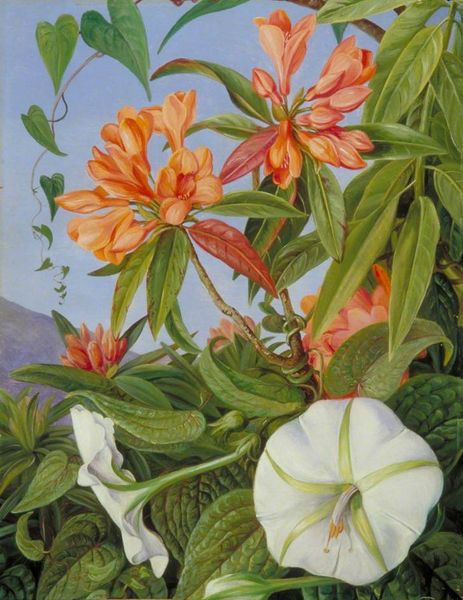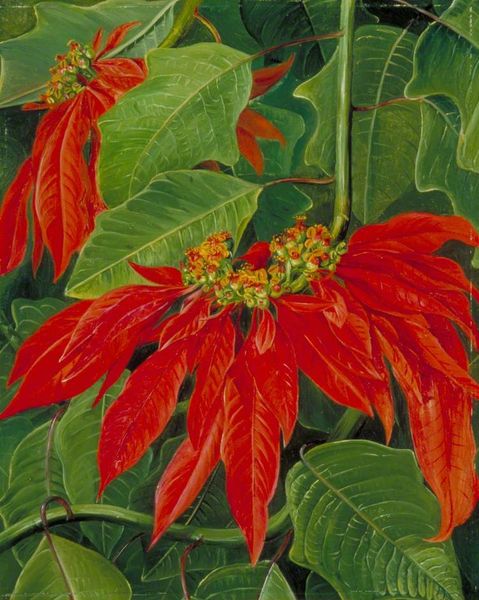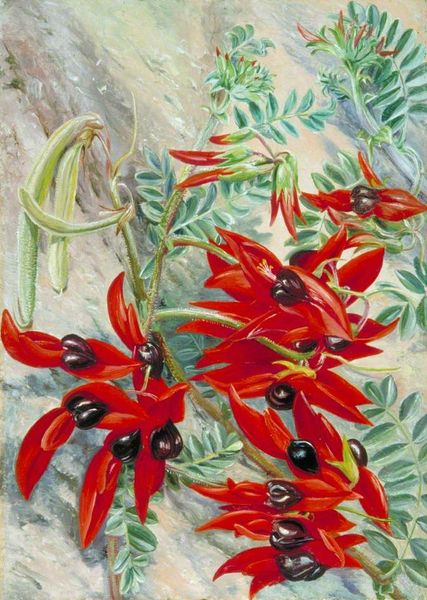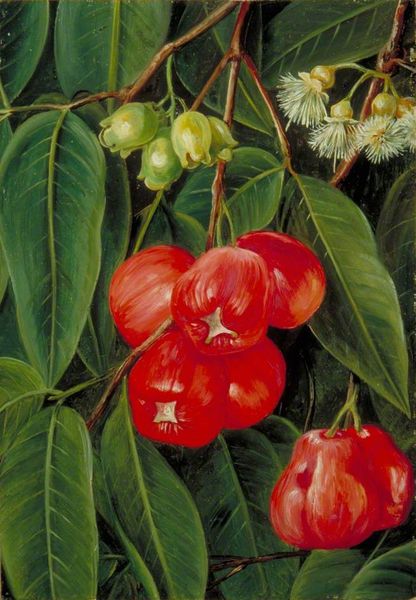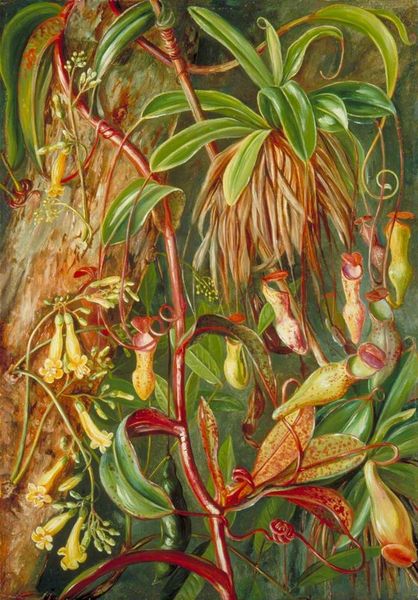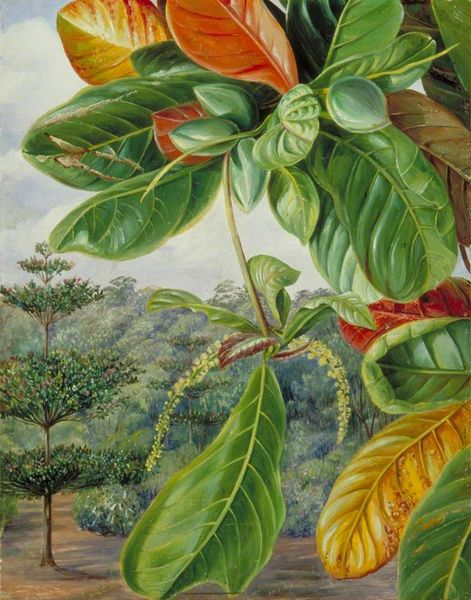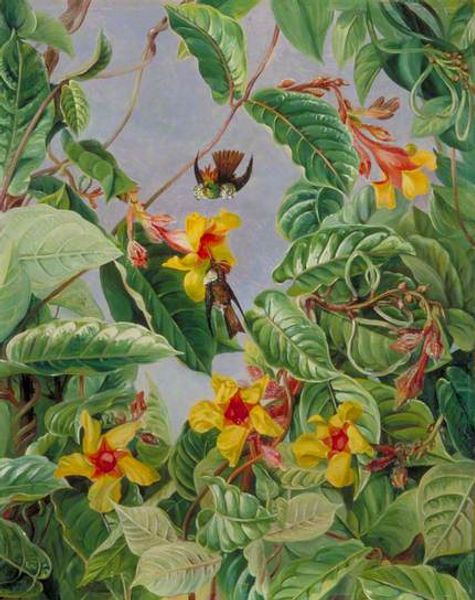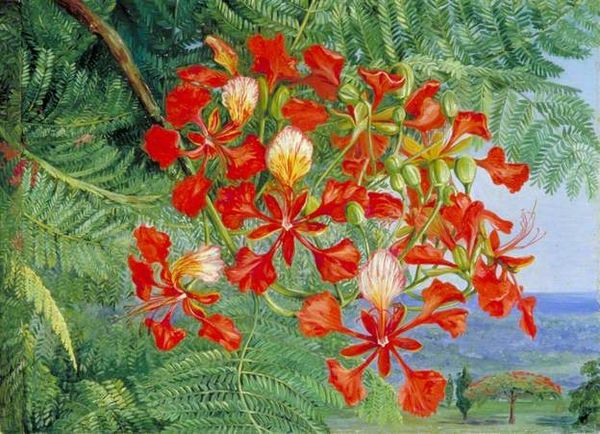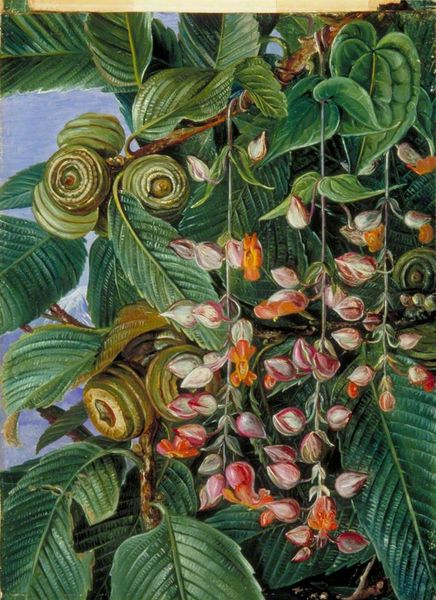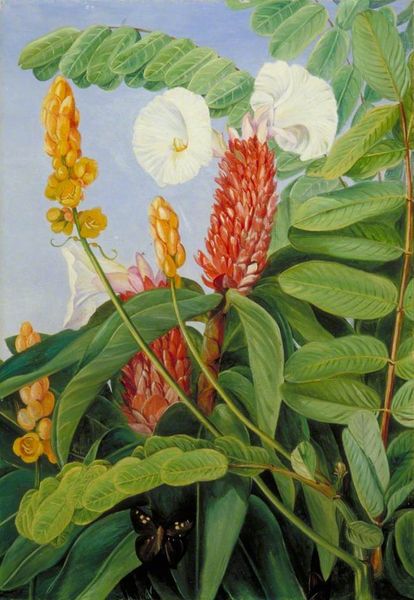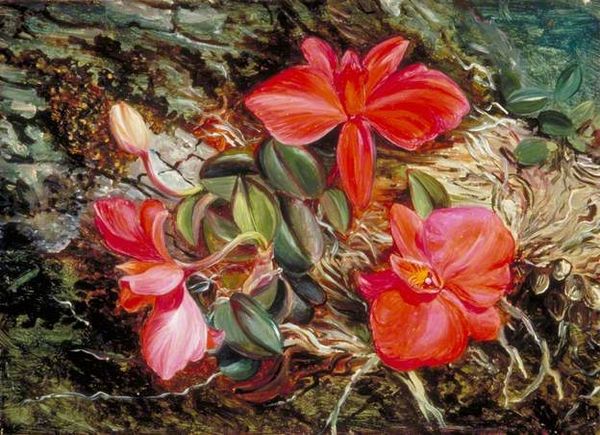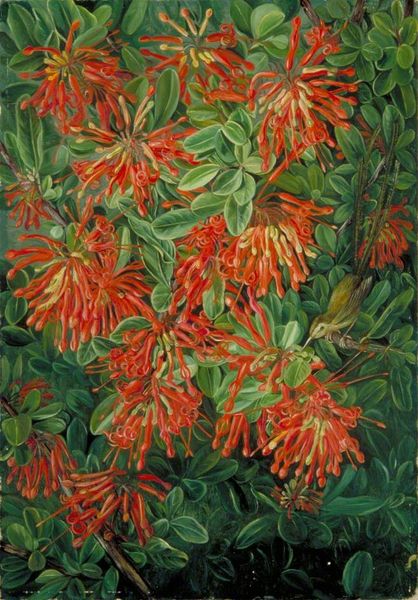
painting, plein-air, oil-paint
#
painting
#
impressionism
#
plein-air
#
oil-paint
#
landscape
#
flower
#
leaf
#
nature
#
oil painting
#
plant
#
botany
#
natural environment
Copyright: Public domain
Curator: Looking at Marianne North’s "Foliage and Flowers of the Burmese Thaw-Ka or Soka," painted in 1876, one immediately notes the scientific precision mingled with a vivid artistic sensibility. The artwork is a plein-air oil painting. Editor: Yes, the rich reds and greens jump out. There's a dramatic, almost overwhelming quality to the close-up view of these exotic blossoms. It feels like a study of vibrant excess, a celebration of untamed growth. Curator: North travelled extensively and documented flora from around the world. Her botanical paintings provide valuable insight into plant life in different regions during the late 19th century. It speaks to an era of exploration and scientific discovery shaped by European imperialism. Editor: Absolutely. And it also compels us to think about whose perspective is shaping this view of “discovery.” North, a privileged British woman, capturing a far-away land…It highlights questions of representation, power dynamics, and the colonial gaze. The ‘objective’ scientist is always a figure embedded in socio-political forces. Curator: Her work sits within the Victorian context where scientific illustration became increasingly popular and more women gained access to education and, therefore, to documenting scientific knowledge, although they were generally excluded from other spheres of scientific authority. Her botanical paintings, exhibited in a dedicated gallery at Kew Gardens, demonstrate her determination to assert herself in what was considered a male arena. Editor: Exactly. By pushing into those spaces, artists like North carved out room for other voices and viewpoints to emerge. She also complicates conventional narratives about nature. Here we see not just "nature" but the intensely lived, vibrant specificities of the Burmese landscape. Her work functions almost as an archive of visual knowledge about the diversity and evolution of natural life. But again, always contextualizing the knowledge of the image. Curator: It certainly broadens how we engage with landscape painting and botanical illustration, wouldn't you agree? Editor: It certainly does, prompting conversations about history, culture, gender, and science through a uniquely powerful combination of artistic expression and visual documentation.
Comments
No comments
Be the first to comment and join the conversation on the ultimate creative platform.
